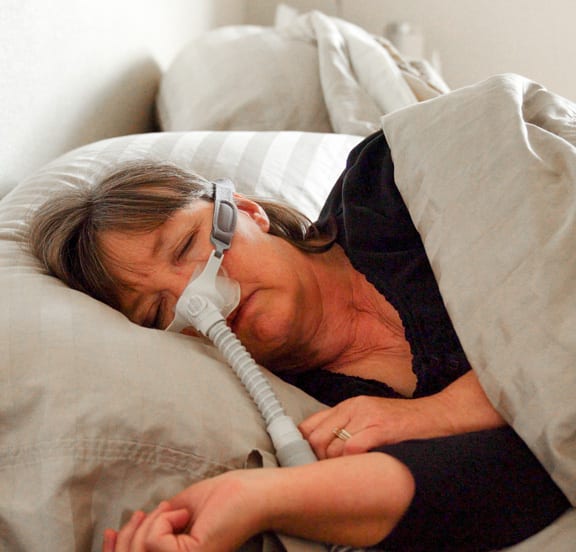It is not uncommon for people who suffer from obstructive sleep apnea to be unaware that they have it.
Obstructive sleep apnea can sometimes have numerous symptoms that patients may overlook. Since this disorder disrupts a healthy sleep cycle, it is important to pay attention to any suggestive signs and follow up with a professional who can recommend an appropriate treatment plan. Quality sleep is a key component of optimal health.
What Is Obstructive Sleep Apnea
Obstructive sleep apnea is a condition that typically involves the soft muscles in the throat. When they become too relaxed, the airway can become blocked. This often presents the classic symptoms of loud snoring or interrupted natural breathing. When breathing stops periodically as it does with this condition, carbon dioxide begins to build up in the blood, which triggers the brain to cause the sleeper to awaken in order to get oxygen. Signs that obstructive sleep apnea is present may include:
- Daytime sleepiness or difficulty concentrating
- Irritability or mood swings
- Morning dry mouth, sore throat, or headache
- Gasping due to interrupted breathing during sleep
- Loud snoring
- Frequent awakening during the night with or without the sleeper’s awareness


Who Is at Risk?
Many people who suffer from this condition tend to be overweight. Excess weight may indicate the presence of fatty tissues that participate in the blocking of the airway when on the back. A weight issue is by no means the only precursor for the condition, however. Other risk factors can include a narrow airway or nasal congestion. People who smoke, have diabetes, or experience asthmatic symptoms might be prone to obstructive sleep apnea. It is also more common in men than women. Some individuals may have a genetic predisposition to the condition as well. Situations where risk factors are compounded, such as being overweight in addition to asthmatic, can increase the odds of developing the sleep disorder.
How Can It Be Treated?
The appropriate treatment plan for obstructive sleep apnea begins with an accurate diagnosis. Diagnostic measures may be as simple as discussing symptoms and other relevant risk factors. Sleep studies may also be warranted in order to get a better look at physical responses during sleep, such as breathing patterns, brain activity, and movement.
Treatment depends on the factors involved that have contributed to the development of the obstructive sleep apnea. In cases of obesity, for example, lifestyle changes may be all that is necessary to find relief. Limiting alcohol and quitting smoking could also help minimize episodes of the condition. Another approach could entail the treatment of an underlying condition discovered during an examination or sleep study. Some individuals may ultimately need to take a surgical approach to correct the problem. A common approach, however, is the use of positive airway pressure machines or mouth appliances. These help keep airways open via the use of airflow or by the position of the jaw, respectively.
Many of the associated symptoms of obstructive sleep apnea can easily be dismissed, so a thorough exam may be useful if an individual notice or is told by someone else that breathing during sleep might be compromised. Whether the noticeable symptom is loud snoring followed by periods of silence or the sleeper periodically awakens choking or gasping, an appointment with the Nasal & Sinus Surgery Center can provide a useful opportunity to have matters looked at and diagnosed.
